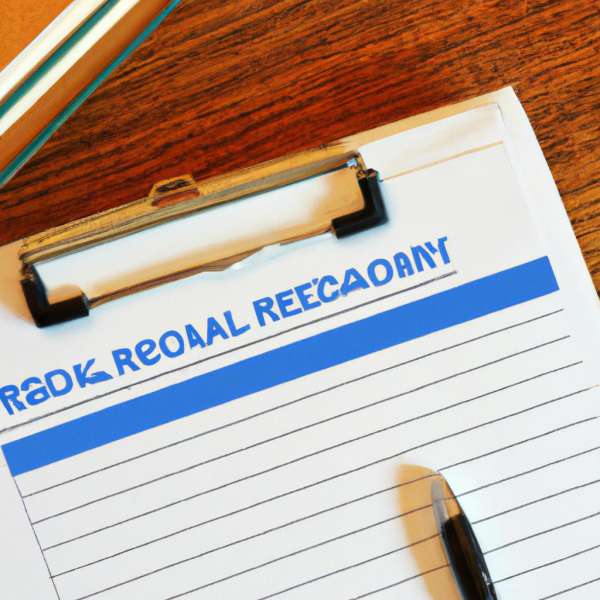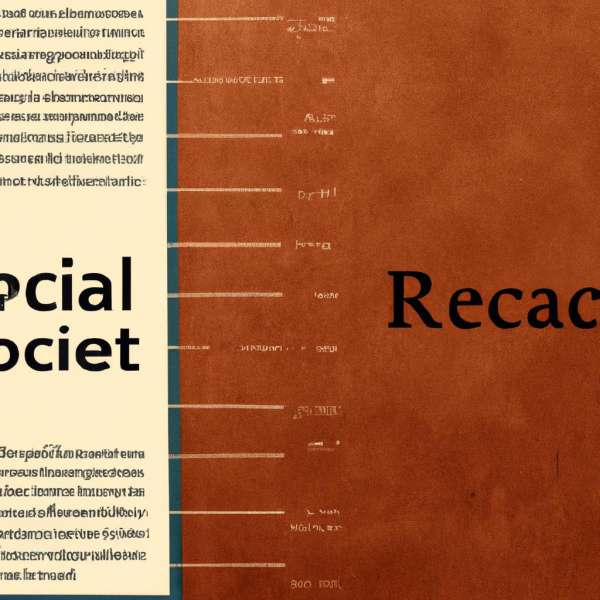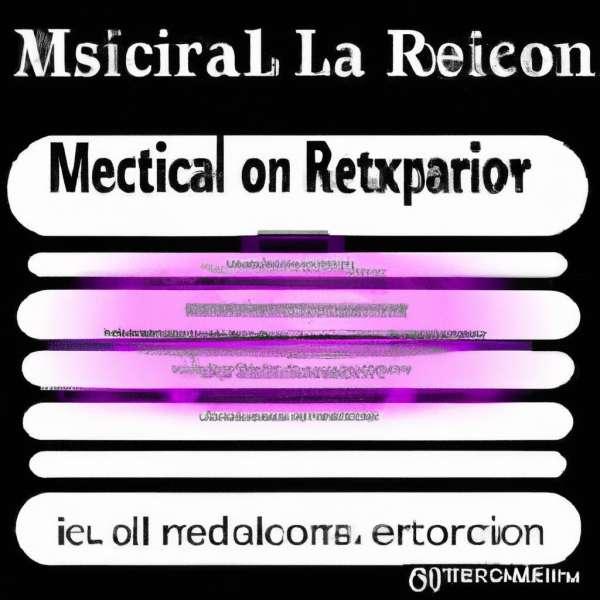In the intricate realm of personal injury litigation, where outcomes can significantly impact lives, the importance of medical records is often underestimated and misunderstood. These documents, frequently dismissed as mere administrative paperwork, are actually crucial pieces of evidence that document an individual’s pain and recovery journey. They are essential in deciphering the intricacies of each case, detailing not only the physical injuries but also the emotional distress endured by the victims. This article delves into the critical role of medical records in personal injury cases, highlighting how they become compelling narratives that substantiate claims, determine damages, and ultimately influence the pursuit of justice. By examining this vital aspect of legal proceedings, we aim to demonstrate why these records are far more than just pages filled with medical terminology—they are the foundation upon which personal injury cases are constructed.
The Crucial Role of Medical Records in Proving Liability
In personal injury litigation, proving liability is essential for securing justice and compensation. One of the most powerful tools in this process is medical records. These documents provide a detailed history of a patient’s medical care and serve as critical evidence that can either support or refute the claims made by both parties involved in the case.
Medical records include various types of information, such as:
- Diagnosis details: Evaluations by healthcare professionals that clarify the nature of the injury.
- Treatment history: Records of treatments received, including surgeries, medications, and therapies.
- Prognosis: Predictions about recovery times and any long-term effects resulting from the injury.
- Follow-up care: Information about ongoing treatment and the patient’s commitment to recovery.
These records are vital not only for demonstrating the extent of injuries but also for establishing a connection between the incident and the resulting harm. For example, if injuries are documented through medical records shortly after an accident, they can provide concrete evidence that the injuries were indeed caused by that specific event. This chronological documentation creates a narrative that can either support or challenge claims of negligence and liability.
Furthermore, inconsistencies in medical records can raise concerns. If a claimant has gaps in treatment or conflicting information about their condition, it may weaken their case. Legal teams often scrutinize these documents to build a strong argument, making every detail crucial in the pursuit of justice.
| Record Type | Importance |
|---|---|
| Initial Examination Reports | Document the immediate aftermath of an injury. |
| Treatment Notes | Show ongoing care and interventions. |
| Test Results | Provide objective evidence of the condition. |
| Discharge Summaries | Synthesize the overall health status at discharge. |

Mastering the Complexities of Medical Documentation for Case Strength
In personal injury cases, the significance of **medical documentation** cannot be overstated. These records form the backbone of evidence, helping to validate claims and quantify damages. However, navigating the complexities of medical records can be daunting for both legal professionals and clients. Understanding how to effectively compile and interpret these documents is crucial for building a strong case.
To streamline the process, focus on the following key elements when gathering medical documents:
- **Chronological Order**: Arrange records in the order of treatment. This helps illustrate the progression of injuries and treatments received.
- **Comprehensive Details**: Ensure that all documentation includes specifics such as dates, diagnosis, treatment plans, and any relevant follow-up care.
- **Consistency Across Records**: Look for cohesion in different records. Similar conclusions from multiple healthcare providers strengthen the credibility of the documentation.
- **Expert Testimonies**: If applicable, include statements from medical professionals that elaborate on the injuries and their implications.
Using a well-organized format can simplify the handling of medical records. Here is a simple table that highlights essential components of effective medical documentation:
| Component | Details |
|---|---|
| Initial Examination | Details of the first medical assessment post-incident. |
| Treatment Records | Documentation of all medical interventions and therapies. |
| Diagnostic Tests | Results from tests that provide objective evidence of injuries. |
| Follow-Up Reports | Notes on the patient’s progress and ongoing care. |

Mastering the Complexities of Medical Documentation for Case Strength
In personal injury cases, the significance of **medical documentation** cannot be overstated. These records form the backbone of evidence, helping to validate claims and quantify damages. However, navigating the complexities of medical records can be daunting for both legal professionals and clients. Understanding how to effectively compile and interpret these documents is crucial for building a strong case.
To streamline the process, focus on the following key elements when gathering medical documents:
- **Chronological Order**: Arrange records in the order of treatment. This helps illustrate the progression of injuries and treatments received.
- **Comprehensive Details**: Ensure that all documentation includes specifics such as dates, diagnosis, treatment plans, and any relevant follow-up care.
- **Consistency Across Records**: Look for cohesion in different records. Similar conclusions from multiple healthcare providers strengthen the credibility of the documentation.
- **Expert Testimonies**: If applicable, include statements from medical professionals that elaborate on the injuries and their implications.
Using a well-organized format can simplify the handling of medical records. Here is a simple table that highlights essential components of effective medical documentation:
| Component | Details |
|---|---|
| Initial Examination | Details of the first medical assessment post-incident. |
| Treatment Records | Documentation of all medical interventions and therapies. |
| Diagnostic Tests | Results from tests that provide objective evidence of injuries. |
| Follow-Up Reports | Notes on the patient’s progress and ongoing care. |
By meticulously organizing and clearly presenting medical documentation, legal teams can construct a more persuasive case. The comprehensive details within these records weave a narrative that can influence the outcomes of personal injury cases, illustrating the true impact of injuries on an individual’s life.

Effective Strategies for Organizing and Preserving Medical Records
Efficiently organizing and maintaining medical records is essential, particularly when they play a crucial role in personal injury cases. To start, establish a reliable filing system. Utilize both **electronic and physical records** to ensure accessibility and backup. Categorizing records by type—such as diagnostic reports, treatment plans, and billing statements—creates a streamlined repository that simplifies retrieval during legal proceedings.
Moreover, conducting **regular audits** of medical files can help identify any inconsistencies or missing information. This step is vital not only to maintain the integrity of the records but also to avoid complications during legal evaluations. Ensure that all medical personnel involved in documentation are trained in proper record-keeping practices, and employ the following techniques to maintain accuracy:
- Consistency in Data Entry: Always use standardized terminology and formats.
- Timely Updates: Records should be updated immediately following consultations or treatments.
- Secure Storage: Both physical and digital records should be stored in a secure environment to protect patient confidentiality.
consider implementing a **retention schedule** that outlines how long records should be kept and how they should be disposed of when no longer needed. The following table illustrates a basic retention timeline for various record types:
| Record Type | Retention Period |
|---|---|
| Patient Medical History | 7 years post-discharge |
| Radiology Images | 5 years |
| Billing Records | 10 years |
| Consent Forms | Indefinitely |

The Role of Precise Medical Records in Settlements and Legal Decisions
Accurate medical records are the cornerstone of personal injury cases, often determining the outcome of both settlements and court rulings. When a claim is filed, insurance companies and judges heavily rely on the integrity and detail of medical documentation. Comprehensive records that accurately reflect a plaintiff’s injuries, treatments, and overall recovery journey can significantly enhance the legitimacy of the claim submitted.
Key Elements of Effective Medical Records:
- Chronological Detail: A timeline of medical events allows for a clear narrative of the injury from the moment of occurrence through treatment and recovery.
- Consistent Terminology: Uniformity in medical language ensures that all parties involved understand the nature and severity of the injuries.
- Thorough Documentation: Including notes from various healthcare providers strengthens the credibility of the records, providing a fuller picture of the plaintiff’s health status.
Conversely, sparse or incomplete medical records may raise red flags for insurers and jurors alike, leading to potential undervaluation of claims or unfavorable court outcomes. For instance, if critical details are missing or inconsistencies are found, it can undermine the credibility of the entire case.
If a medical record simply mentions “back pain” without providing details on aspects such as severity, occurrence, and treatments administered, it can be challenging for the plaintiff to convincingly support their claims.
The link between well-documented medical records and financial compensation becomes evident when examining settlement averages. A review of sample data underscores this connection:
| Record Quality | Average Settlement Amount |
|---|---|
| Comprehensive | $150,000 |
| Moderate | $75,000 |
| Minimal | $25,000 |
As demonstrated, the quality and thoroughness of medical records significantly impact both settlement discussions and court decisions. Plaintiffs who ensure their medical documentation is detailed and accurate not only strengthen their case but also increase their chances of obtaining appropriate compensation for their injuries.
Looking Ahead
As we conclude our exploration of the critical role of medical records in personal injury cases, it is evident that these documents are far more than simple records; they are essential to achieving justice and accountability. They act as a crucial link between the patient’s experience and the legal process, guiding the way toward fair compensation and recovery.
In the realm of law, well-organized and detailed medical records can be a game-changer, turning an unclear narrative into a persuasive argument supported by factual and clinical evidence. For both plaintiffs and defendants navigating the legal landscape, the importance of precise and timely medical documentation cannot be overstated.
Ultimately, recognizing the pivotal role of medical records in personal injury cases empowers individuals to take control of their health outcomes and legal rights. Whether you are a victim seeking justice or a legal professional aiming for clarity, the careful management and preservation of these records can be a formidable asset. In a world where every detail can influence the outcome, ensuring that medical records accurately reflect the nuances of one’s experience is not just procedural—it is fundamental to achieving justice.
The Importance of Medical Records in Personal Injury Cases
In personal injury cases, medical records serve as the cornerstone of your claim. They document the extent of your injuries, the treatments you’ve received, and the impact on your daily life. Without this crucial evidence, proving the severity of your injuries and their connection to the incident becomes exponentially harder.
What Constitutes Medical Records?
Medical records encompass a variety of documents, including:
- Doctor’s notes and prescriptions
- Diagnostic tests (e.g., X-rays, MRIs)
- Hospital discharge summaries
- Physical therapy reports
- Prescription receipts
Each type of document provides essential information that collectively supports your case.
How Medical Records Influence Insurance Settlements
Insurance companies scrutinize medical records to determine the extent of your injuries and validate your claims. Here’s how they impact the settlement process:
| Factor | Impact |
|---|---|
| Diagnosis | Helps establish the nature and severity of injuries. |
| Timeline of Treatment | A detailed timeline indicates ongoing suffering and long-term impact. |
| Consistency | Consistent records solidify your case’s legitimacy. |
Practical Tips for Leveraging Your Medical Records
Navigating a personal injury claim can be daunting, but these practical tips can help maximize your chances of success:
1. Keep Detailed Records
Maintain a comprehensive file of all your medical visits, treatments, and communications with healthcare providers.
2. Document Ongoing Symptoms
Regularly document how your injuries impact your daily life, including pain levels and physical limitations. This ongoing log can corroborate your medical records.
3. Follow Your Doctor’s Advice
Adhering to prescribed treatments not only aids your recovery but also shows you’re taking your health seriously, which strengthens your case.
Case Studies: Real-life Examples
To further illustrate the importance of medical records, let’s explore a couple of real-life case studies:
Case Study 1: Successful Settlement Due to Detailed Records
A construction worker suffered a severe back injury on the job. His detailed medical records, including X-rays, MRI results, and a comprehensive treatment history, were pivotal in securing a substantial settlement. With clear documentation of his ongoing medical needs, the insurance company had little room to dispute the claim.
Case Study 2: Claim Denied Due to Inconsistent Records
In another instance, a car accident victim’s claim was denied because her medical records were inconsistent. Gaps in treatment and conflicting reports from different healthcare providers weakened her case, leading the insurance company to question the validity of her injury claims.
Benefits of Thorough Medical Documentation
The advantages of having well-organized and comprehensive medical records in your personal injury case are manifold:
Clear Evidence of Your Injuries
Thorough medical documentation provides irrefutable proof of the nature and severity of your injuries. This is crucial for both settlement negotiations and any potential court proceedings.
Enhanced Credibility
Well-maintained records help establish your credibility. They show that you’ve taken your condition seriously and sought appropriate medical care, which can positively influence judges and juries.
Higher Compensation
The more compelling your medical records, the better your chances of securing higher compensation. Detailed documentation helps justify the costs associated with your injuries, including medical expenses, lost wages, and pain and suffering.
Reduced Disputes
Comprehensive records leave little room for insurance companies to dispute your claims, facilitating a smoother negotiation process.
Frequently Asked Questions (FAQ)
- How soon should I request my medical records?
As soon as possible. Promptly obtaining and reviewing your medical records can help identify and rectify any discrepancies early in the process.
- Can I handle my medical records or should my lawyer take care of them?
While you can maintain personal copies of your medical records, it is advisable for your attorney to handle the official documentation to ensure its thoroughness and accuracy.
- What if my medical records contain errors?
Alert your healthcare provider immediately to correct any inaccuracies. Inaccurate records can undermine your case, so it’s crucial they reflect the true nature of your injuries.
Utilizing Technology to Simplify Record-Keeping
Modern technology offers various tools to help you maintain organized records:
Medical Record Apps
Several mobile applications allow you to store, organize, and access your medical records digitally, making it easier to keep everything in one place.
Cloud Storage
Utilizing cloud storage services like Google Drive or Dropbox ensures you can access your medical records anytime, anywhere, and share them easily with your attorney.
Spreadsheets
Keep an Excel or Google Sheets file to log appointments, treatments, and communications. Consistent tracking provides a clear overview of your medical history.





